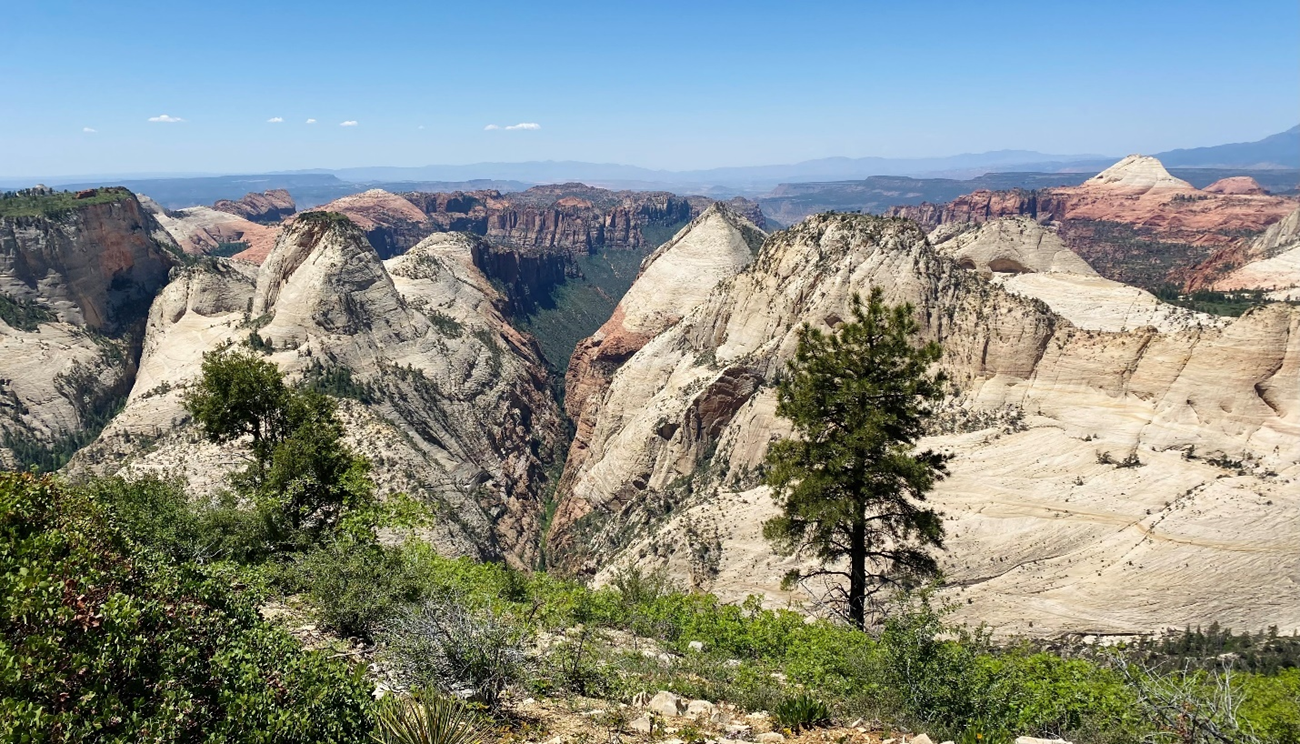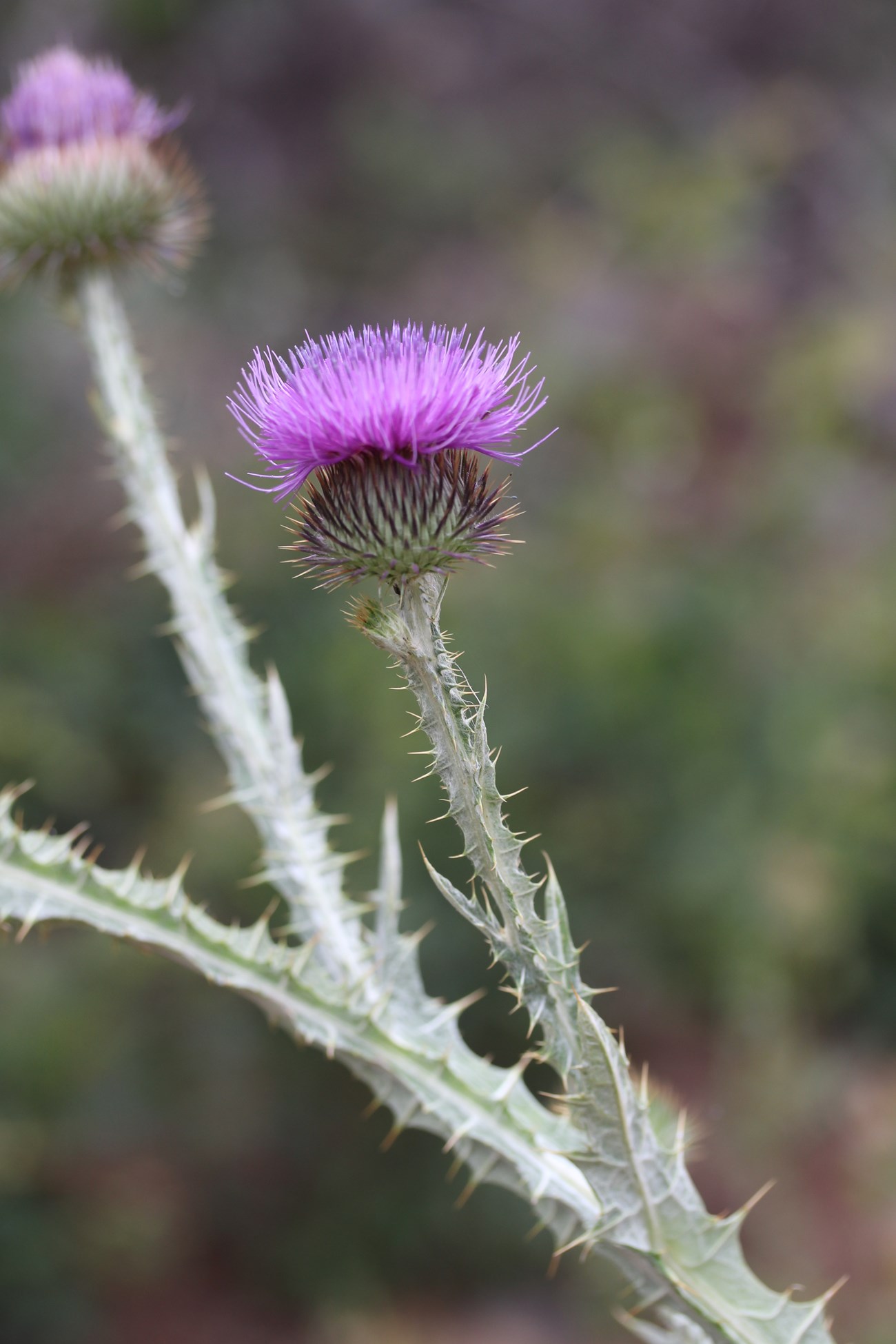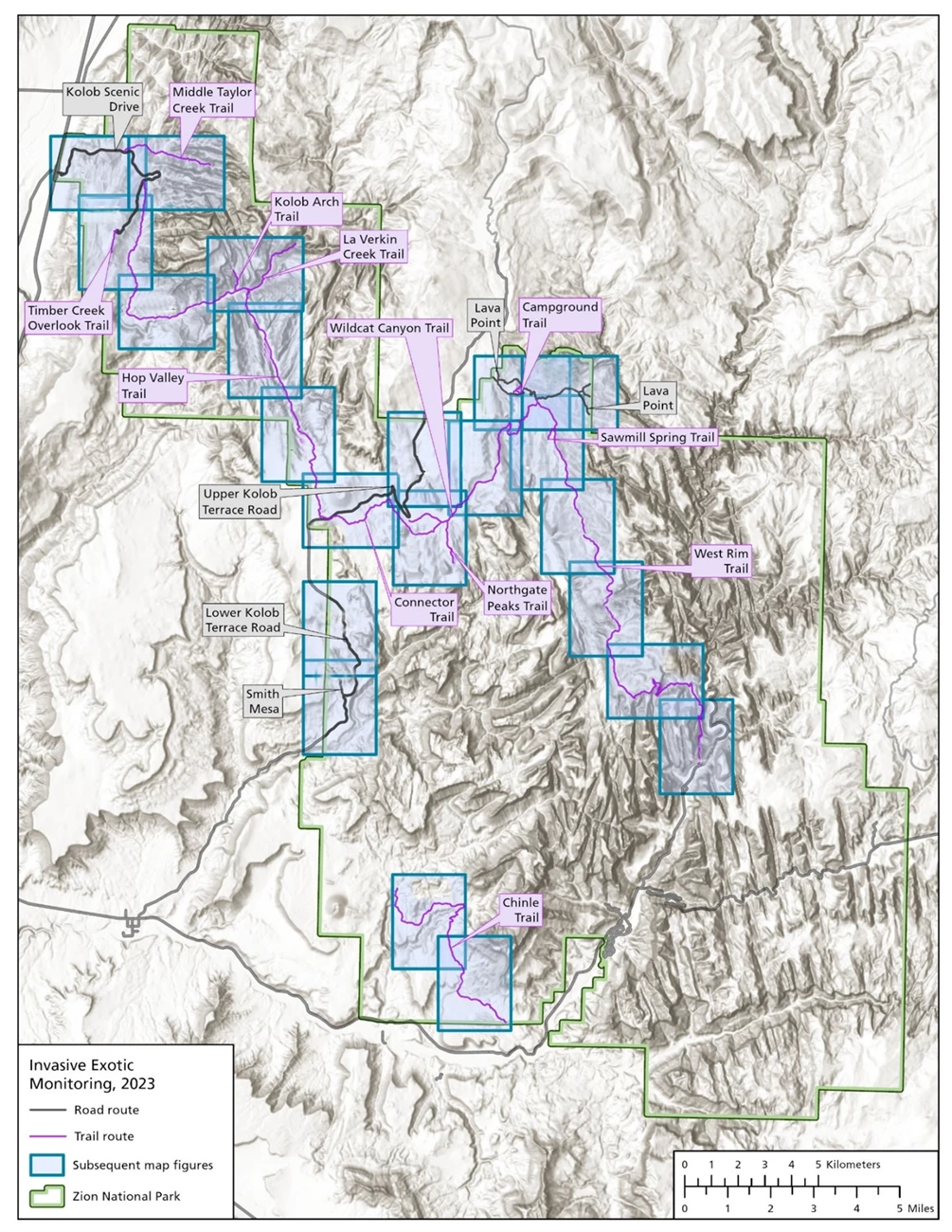Last updated: September 17, 2025
Article
Invasive Exotic Plant Monitoring at Zion National Park: 2023 Field Season

NPS/Amy Washuta
Why Monitoring Matters
Invasive exotic plants (IEPs)—plants that are not native and can quickly spread in new areas—are growing across Zion National Park (NP). Species like Scotch thistle (Onopordum acanthium) and whitetop (Cardaria sp.) are widespread and can crowd out native vegetation, degrade wildlife habitat, and change how visitors experience the landscape. These plants disrupt ecosystems and can reduce plant diversity and the presence of native pollinators. Monitoring IEPs helps park managers focus control efforts, protect native species, and keep the landscape healthy. This update highlights current trends, high-risk areas, and ongoing challenges.
What We Found
In 2023, Northern Colorado Plateau Network (NCPN) crews recorded 55 patches of 4 priority invasive plant species along more than 83 kilometers (51.6 miles) of monitoring routes in the park (Table 1). Scotch thistle and whitetop were the most prevalent species (Figure 1). These plants were commonly found along roads, trails, and other disturbed areas.
| Common Name Scientific name |
Total Infestations | No Size Class Recorded | 1–3 Plants | 3 Plants– 40 m² |
40– 400 m² |
400– 1000 m² |
>1000 m² |
|---|---|---|---|---|---|---|---|
| Siberian elm Ulmus pumila |
3 | 1 | 1 | 1 | 0 | 0 | 3 |
| Scotch thistle Onopordum acanthium |
12 | 2 | 8 | 2 | 0 | 0 | 12 |
| whitetop Cardaria sp. |
6 | 0 | 6 | 0 | 0 | 0 | 6 |
| summer-cypress Bassia scoparia |
1 | 0 | 0 | 1 | 0 | 0 | 1 |
| Priority Species, Total | 22 | 3 | 15 | 4 | 0 | 0 | 22 |

NPS/Amy Washuta
Patterns differed across species and sites. Routes like Kolob Scenic Drive and Smith Mesa Road had the highest number of infestations recorded in 2023. In contrast, ten trails—including West Rim Trail and Wildcat Canyon Trail—had no priority species detected.
Cheatgrass was the most widespread species in transects, present in over 50% of transects. Cover was especially high in western routes, averaging 1.81% across those areas.
Siberian elm (Ulmus pumila), which had been more common in earlier years, was detected less frequently in 2023, suggesting progress in control efforts.
Despite declines in some species, infestations remain in key routes and disturbed areas, underscoring the need for continued monitoring and targeted control. Early detections and shifts in species presence highlight the value of ongoing surveillance across Zion’s most vulnerable areas.
How We Collected the Data
Crews surveyed 18 monitoring routes from May 24–31, 2023, covering about 83.1 km (51.6 miles) (Figure 2). They recorded invasive plant locations, species, and patch size. Most routes followed roads, trails, or other areas with frequent disturbance.

NPS/Aneth Wight, Eliot Rendleman
A shaded relief map of Zion National Park with road and trail routes surveyed for invasive exotic plants during May 24–31, 2023. The park boundary is outlined in green. Trail routes are highlighted in purple, including Kolob Arch, La Verkin Creek, Wildcat Canyon, West Rim, Chinle, Hop Valley, Northgate Peaks, and others. Road routes are shown in black, including Kolob Scenic Drive, Upper and Lower Kolob Terrace Road, Timber Creek Overlook, Smith Mesa, and Lava Point. Blue boxes indicate areas that are shown in greater detail in subsequent figures.
The map legend in the lower left identifies route types with black for roads, purple for trails, and blue boxes for subsequent map figures. A north arrow and scale bar in kilometers and miles are also included.
Consistent methods were used to estimate how likely it was to detect each plant species in the field. This helps ensure accuracy across different routes and survey teams. Teams walked along each route and documented all visible infestations within a 4–10 meter-wide area. Quadrats were placed at set distances along survey lines to estimate plant cover and soil characteristics.
What Comes Next
Invasive plant densities and species composition differed by route. Kolob Scenic Drive and Smith Mesa Road had the highest densities of priority invasive plants in 2023, while many routes—including West Rim Trail and Wildcat Canyon Trail—had no detections. Scotch thistle and whitetop were the most common priority species, while Siberian elm and bull thistle were detected less frequently than in past years, suggesting progress from ongoing control efforts.
Park managers can use these findings to better detect, manage, and prevent the spread of invasive plants at Zion National Park.
Information in this article was summarized from Invasive exotic plant monitoring at Zion National Park: 2023 field season by T. Nash. Content was edited and formatted for the web by E. Rendleman.
